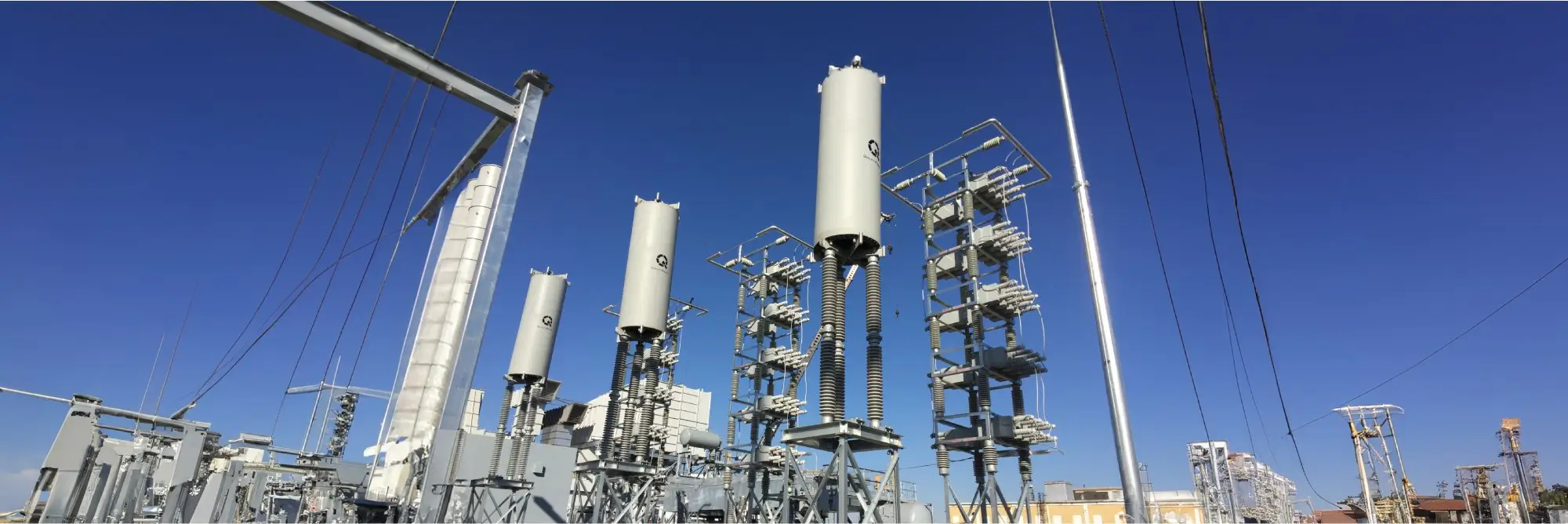
Reactors > Series Reactors
Inrush/Damping Current Reactor
Inrush Current Limiting Reactors (ICLRs) play a crucial role in mitigating the transients and overcurrents associated with capacitor switching in power systems. These reactors are designed to handle the high inrush currents and overvoltages that can occur during the energization of capacitors, protecting system components and enhancing operational stability. This detailed summary explores the design, functionality, applications, and benefits of ICLRs in electrical power systems.

Design and Functionality of Inrush Current Limiting Reactors:
1 Capacitor Switching and Associated Transients:
- Transient Generation: Capacitor switching can cause significant electrical transients due to the sudden change in system capacitance. These transients can affect both the switched capacitor and remote locations within the power system.
- Overvoltage Events: During capacitor energization, overvoltages can occur on the switched capacitor, leading to potential damage and reduced lifespan of the capacitor bank.
2 Voltage Magnification at Lower-Voltage Capacitors:
- System Resonance: The energization of capacitors can lead to voltage magnification, especially at lower-voltage capacitor banks. This phenomenon is often due to system resonance, where the natural frequency of the system aligns with the switching frequency.
- Impact on Equipment: Voltage magnification can stress lower-voltage capacitors and other connected equipment, increasing the risk of failure and operational issues.
3 Transformer Phase-to-Phase Overvoltages:
- Line Termination Overvoltages: Capacitor switching can induce phase-to-phase overvoltages at transformer line terminations. These overvoltages can damage transformers and associated equipment, leading to costly repairs and downtime.
- Insulation Stress: The induced overvoltages place additional stress on transformer insulation, potentially leading to insulation breakdown and transformer faults.
4 Inrush Current from Back-to-Back Switching:
- High Inrush Currents: When switching capacitors in close succession, known as back-to-back switching, the inrush currents from one capacitor can surge into another. These high inrush currents can exceed the design limits of the capacitors and associated switchgear.
- Switchgear Protection: Protecting switchgear from these high inrush currents is critical to maintaining system reliability and preventing equipment damage.
5 Current Outrush into Nearby Faults:
- Capacitor Discharge: In the event of a nearby fault, the stored energy in the capacitor can discharge rapidly, resulting in a current outrush into the fault. This sudden discharge can exacerbate the fault conditions and cause further damage.
- Fault Propagation: The current outrush can propagate the fault, affecting downstream equipment and increasing the complexity and duration of fault resolution.
6 Dynamic Overvoltage During Simultaneous Switching:
- Capacitor and Transformer Switching: Simultaneously switching a capacitor and a transformer can lead to dynamic overvoltage conditions. These overvoltages are due to the combined effects of the inductive and capacitive components being energized together.
- System Stability Impact: Dynamic overvoltages can destabilize the power system, affecting voltage regulation and overall system performance.
Applications of Inrush Current Limiting Reactors:
1 Utility Power Systems:
- Capacitor Banks: In utility power systems, ICLRs are commonly used with capacitor banks to limit inrush currents during energization, protecting the capacitors and improving system reliability.
- Substation Protection: ICLRs are installed in substations to mitigate transients and overcurrents associated with capacitor switching, ensuring stable operation and protecting critical infrastructure.
2 Industrial Power Systems:
- Large Industrial Facilities: In industrial settings, where large capacitor banks are used for power factor correction and voltage support, ICLRs help manage inrush currents and protect sensitive equipment from transients.
- Process Continuity: By limiting transients, ICLRs ensure the continuity of critical industrial processes, preventing interruptions and maintaining productivity.
3 Renewable Energy Integration:
- Wind and Solar Farms: In renewable energy installations, ICLRs help manage the switching of capacitor banks used for voltage support and reactive power compensation, enhancing the reliability and stability of the renewable energy system.
- Grid Support: As renewable energy sources are integrated into the grid, ICLRs ensure smooth operation by mitigating transients and protecting equipment.
Benefits of Inrush Current Limiting Reactors:
1 Enhanced Equipment Protection:
- Capacitor and Transformer Safety: ICLRs protect capacitors and transformers from the harmful effects of inrush currents and overvoltages, reducing the risk of damage and extending the operational life of these components.
- Switchgear Longevity: By managing high inrush currents, ICLRs protect switchgear from excessive wear and potential failure, enhancing the overall reliability of the power system.
2 Improved Power Quality:
- Transient Suppression: ICLRs effectively suppress electrical transients caused by capacitor switching, improving power quality and reducing the impact on sensitive equipment and industrial processes.
- Voltage Stability: By mitigating dynamic overvoltages and managing voltage magnification, ICLRs contribute to stable voltage levels across the power system, ensuring reliable operation.
3 Operational Efficiency:
- Reduced Maintenance Costs: With ICLRs protecting system components from transients and inrush currents, maintenance costs are reduced due to fewer equipment failures and less frequent repairs.
- Increased Reliability: The overall reliability of the power system is improved, with fewer interruptions and more consistent performance, benefiting both utility providers and industrial operators.
4 Scalability and Flexibility:
- Adaptable Design: ICLRs can be designed and scaled to meet the specific needs of various power systems, from small industrial installations to large utility networks. This adaptability makes them a versatile solution for a wide range of applications.
- Future-Proofing: As power systems evolve and expand, ICLRs can be integrated into new and existing infrastructure, providing ongoing protection and stability.


